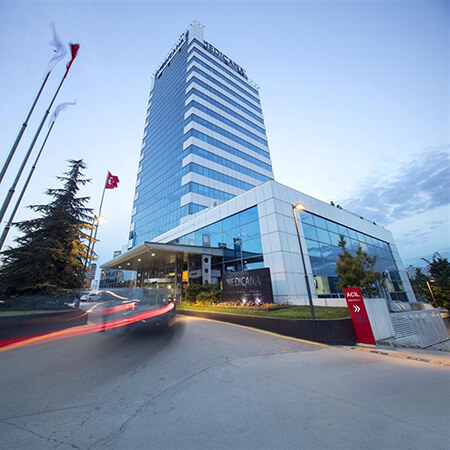Plastic surgery for the treatment of ear deformities allows correcting the shape, position, or size of the ears in both adults and children.
Overview
Ear deformities, or improper positioning of the auricles to other parts of the face, change the perception of a person by others, and patients themselves often have a feeling of physical inferiority. The presence of ear deformities is an especially sensitive issue for children. Therefore, the main task of plastic surgery for ear deformities is to change the shape of the ears and give them an aesthetic and proportional appearance.
The causes of ear deformities are usually anomalies, excess or improper placement of the ear cartilage, as well as deformations of the soft tissues of the auricle.
Types of ear deformities
All types of ear deformities, depending on the time of their occurrence, are divided into congenital and acquired ones.
Congenital ear deformities are caused by the influence of unfavorable factors on the embryo in the first 2-3 months of pregnancy when the outer ear is formed. Congenital ear deformities include the following types of pathologies:
- Macrotia – disproportionate ear deformities caused by excessive development of cartilage tissue
- Constricted ear deformity – an increase in the angle between the ears and the bones of the skull
- Deformation of the earlobe (enlargement, absence, accretion)
- Curl ear deformities – Darwin's tubercle (protrusion on the curl), auricle with a pointed upper pole and smoothed curl, etc.
- Microtia – underdevelopment of the auricles (small, flat, ingrown, etc.)
Microtia is often accompanied by abnormal closure of the auditory canal and underdevelopment of the middle ear. Sometimes it is combined with underdevelopment of the corresponding side of the face. With bilateral microtia, a loss of speech and auditory functions develop often, which leads to the patient's disability.
Acquired ear deformities are not inferior to congenital deformities in the frequency of occurrence. They can be the result of ear injuries, inflammatory processes of the ear, surgery, thermal or chemical damage.
The most common acquired deformity is a keloid scar, i.e. post-inflammatory or post-traumatic overgrowth of the skin in the area of the earlobe or the entire ear. A keloid scar can develop as a result of a burn of the outer ear.
After inflammatory diseases, ear deformities and thickening of the cartilage can occur. Ear deformities can be caused by tumors in the parotid region. The most severe ear deformities include its complete absence due to traumatic injury.
Treatment
Correction of ear deformities, or ear surgery, is one of the most difficult areas of plastic surgery.
Otoplasty, or ear surgery, is a plastic surgery to correct the auricles. Ear surgery is performed in cases of violation of the anatomical structure of the ears and involves a plastic surgery affecting the cartilaginous and soft tissues of the ears. The ear surgery is recommended in childhood and adolescence (from 6 years old) since ear deformities can cause psychological disorders in a child.
Plastic surgery for ear deformities can be aesthetic and reconstructive. Aesthetic plastic surgery changes the shape of the ears, while reconstructive plastic surgery recreates a completely or partially missing auricle.
Indications for ear surgery include:
- The irregular shape of the ears
- Constricted ear deformities
- Smoothed anterior surface of the auricle and antihelix
- Increase in the angle between the occipital ear part and the auricle
- Partial or complete absence of the auricle
Contraindications for ear surgery:
- Diseases of the cardiovascular system and other severe diseases of internal organs
- Diabetes mellitus
- Blood clotting disorders
- Oncological diseases
The main task of ear surgery is anatomically precise plastic surgery correction of parts of the outer ear and preservation of its properties: structure, size, and location. Thus, the greatest difficulty in ear surgery is the reconstruction of the loss of a significant part of the ear.
The technique for performing ear surgery may vary depending on the individual characteristics of the patient.
Ear surgery is performed in a very delicate area and on very delicate tissues. The best aesthetic results can be achieved with the right choice of plastic surgery technique that is most suitable for each specific case.
Aesthetic ear surgery. In the case of cosmetic plastic surgery, a skin incision is often performed along the back of the auricle. In cases of protruding ears, a new auricle of the correct shape is formed. The plastic surgery takes up to 2 hours.
Reconstructive ear surgery. Auricle reconstructive plastic surgery is more complicated. The intervention is carried out in two stages. At the first stage, a subcutaneous space is created, into which a previously prepared fragment of costal cartilage is placed. A few months later, in case of successful engraftment of the cartilage, the second stage is performed, at which the cartilaginous graft is removed and the auricle is formed from it.
Plastic surgery for eliminating severe ear deformities (pronounced microtia) is performed under general anesthesia; in milder cases, local anesthesia can be used.
During the plastic surgery for eliminating constricted ear deformities or asymmetry of the auricles, the surgeon dissects the soft tissue along the back of the auricle and removes excess cartilage tissue. The cartilage is then fixed with several sutures, returning the auricles to their natural position. The incision is sutured, and a compression bandage is applied.
In children, ear deformities are corrected with plastic surgery at the age of 7-9 years due to the peculiarities of the growth and development of the ear. In all patients, ear surgery is carried out not earlier than one and a half years after the trauma.
How the ear surgery is carried out
The most important part of the preparation for ear surgery includes informing patients about the expected results of the plastic surgery, possible risks, and peculiarities of the postoperative period.
Before the plastic surgery, it is necessary to undergo the medical examination and medical tests, as well as to inform the doctor about all existing and past diseases and possible reactions to medications. Before the plastic surgery, a medical study of blood coagulation is also carried out.
Before ear surgery, a consultation with a plastic surgeon and an otolaryngologist is carried out. The patient undergoes a medical laboratory and instrumental examination. Before the actual plastic surgery ear images are taken in different projections. Determination of the missing elements of the ear is carried out according to the following method: the ears are pressed against the head with the fingers, as a result of which the missing folds appear on the outer surface of the auricles, which will need to be reconstructed during the ear surgery.
Plastic surgery techniques can vary depending on the specific problem. The choice of the technique is the prerogative of the surgeon. The choice is based on personal experience, the surgeon's skill in a particular surgery technique, and the patient’s aesthetic expectations.
In most types of plastic surgery for ear deformities, the incision is made behind the auricle and becomes invisible over time. It may be necessary to fix the auricles by wearing elastic support rings or a bandage to protect the formed auricle from accidental injury.
Plastic surgery is often performed under local anesthesia. The drug for anesthesia is selected based on anamnesis data, taking into account possible allergic reactions and drug intolerance in patients.
Ear surgery is carried out in stages, in two, and sometimes four stages at intervals of 2-4 months, due to the complexity of the outer ear relief. The cartilage is the main material for creating the base of the new auricle during plastic surgery.
The first stage of the plastic surgery usually includes the formation of a subcutaneous pouch in the area of the deformed or absent auricle and the placement of a cartilaginous frame in it. In 2-6 months, the second stage of the plastic surgery is performed – detachment of the engrafted frame together with the skin and the formation of the auricle. The skin defect formed in the behind-the-ear area is covered with a free skin graft. On average, a course of plastic surgery treatment is about one year.
Plastic surgery of ear deformities with broken cartilages is aimed at recreating their normal anatomical shape. The incision of the cartilage is made from the back of the ear, then the anatomical integrity of the cartilage is restored and fixed in the correct position.
The postoperative period involves wearing a medical fixing bandage. During the first 7 days, it cannot be removed, and then the bandage is left only overnight.
During the consultation, the plastic surgeon of the clinic will listen to your wishes, conduct a medical examination, and if necessary, prescribe additional examinations and suggest the best ear surgery methods for you.
Complications of ear surgery
Complications after ear surgery are rare and occur in less than 0.5% of cases. The common complications include rupture of sutures, suppuration, and the formation of rough scars. After plastic surgery ears can sometimes go back to the asymmetric form and lose the aesthetic look.
One of the most serious complications is ischemic necrosis of the auricle cartilage. To prevent complications, medical supervision is required during the 2-3 days after ear surgery.
With careful adherence to the technique of plastic surgery, the efficiency of correcting ear deformities is about 90% and the number of complications is reduced significantly. Additional surgeries can be performed in complications or acquired asymmetry after the main surgery.
Where can I undergo treatment of ear deformities in Turkey?
Medical tourism becomes more and more popular these days, as, for instance, the treatment in Turkey ensures a much better quality of ear surgery.
The best success rates in ear surgery in Turkey demonstrate:
- Memorial Ankara Hospital
- Memorial Sisli Hospital Istanbul
- TravelMEDI Clinic Istanbul
- Medipol Mega University Hospital Istanbul
- Memorial Atasehir Hospital Istanbul
You can check out the full list of clinics in Turkey on the Booking Health website.
The cost of ear deformities treatment in Turkey
The prices in hospitals listed on the Booking Health website are relatively low. With Booking Health, you can undergo treatment in Turkey in the best plastic surgery clinics at an affordable price.
The cost of ear deformities treatment in Turkey varies, as the prices depend on clinics, the chosen type of treatment, and its complexity.
The cost of ear deformities treatment in Turkey is approximately 3,300 EUR.
You also need to consider the cost of additional corrective procedures and follow-up care. Therefore, the ultimate cost of ear deformities treatment in Turkey may differ from the initial prices.
To make sure that the cost of ear deformities treatment in Turkey is suitable for you, contact us by leaving the request on the Booking Health website.
How can I undergo plastic surgery in Turkey?
It is not easy to self-organize any treatment abroad. It requires certain knowledge and experience in medical tourism. Thus, it is safer, easier, and less stressful to shift some responsibility onto a medical tourism agency.
As the largest and most transparent medical tourism agency in the world, Booking Health has up-to-date information on ear surgery in Turkey.
Booking Health will help you select a hospital, taking into account your wishes for treatment. We will provide a list of specialized clinics in Turkey, and you can choose the right one for you.
We want to help you and take on all the troubles. You can be free of unnecessary stress, while Booking Health takes care of all organizational issues. We will make sure that you undergo the treatment in Turkey safely.
Medical tourism can be easy! All you need to do is to leave a request on the Booking Health website and our manager will contact you shortly.








